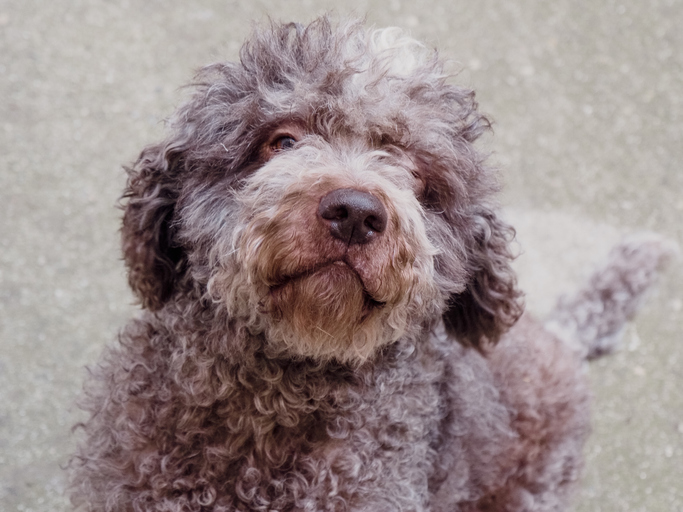
Breed standards frequently draw from geometry to describe the ideal of a given breed. They can refer to circles (From the Pumi standard: Tail: set high, it arches over the back forming a full circle from base to tip), squares (the Norwegian Elkhound is a square and athletic member of the northern dog family), rectangles (the Danish Swedish Farmdog is a small, compact, lively, smooth coated, and slightly rectangular dog), triangle ( from the Chinese Shar-Pei standard: Ears – extremely small, rather thick, equilateral triangles in shape), oval ( German Pinscher: Eyes -medium size, dark, oval in shape without appearance of bulging), diamond (Pug: The markings are clearly defined. The muzzle or mask, ears, moles on cheeks, thumb mark or diamond on forehead), cone (Briard: The neck is in the shape of a truncated cone, clearing the shoulders well), trapezoid (Cane Corso: Viewed from the front, the anterior face should look flat and form a trapezoid, wider at the bottom), and rhomboid (The Ibizan Hound ear: The overall shape resembles an elongated geometric rhomboid with its bottom third cut-off).
While there are many shapes one won’t find in any breed standard (parallelogram, pyramid, tetrahedron, hexahedron – you get the idea), there is one common shape that will be found in only one AKC breed standard as of this writing. It is a two-dimensional geometric shape formed by cutting a circle in half along its diameter. It’s the semi-circle, and in one sporting breed, the lack of a semi-circle in one aspect of the breed’s head impacts breed type.
In this breed, the muzzle is quite broad, an aspect of a head that is a broad blunted wedge when viewed from above and from the side. A wide robust underjaw defines the shape of the muzzle and it is here that the breed’s lips form an upside-down semi-circle.
By now, of course, you’ve recognized the Lagotto Romagnolo:

You may think to yourself that most dogs have similarly shaped lips, but we think it’s significantly important when it is included in a breed standard. Why a short, wide muzzle with large nostrils is important in this breed is simple: It’s better for smell! This is, after all, a working breed that relies on smell, so a long narrow muzzle is a fault. That muzzle is shorter and wider to help get scent information to the dog’s brain faster!
Interestingly, the head is the most changed feature of the breed as it moved from a first career as a gun dog/retriever to a second career as a truffle hunter, but that’s a post for another time.
Image: Lagotto Romagnolo by A_Columbo/iStock
